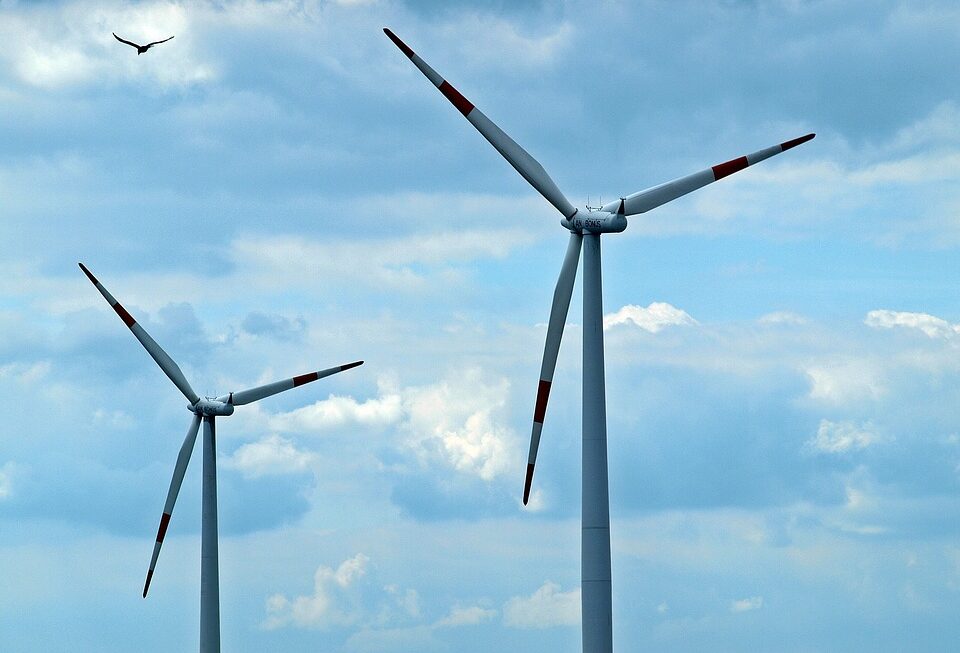[ad_1]
Powering Up with Biomass: How Organic Waste is Generating Renewable Energy
As the world faces increasing pressure to reduce carbon emissions and transition to renewable energy sources, biomass is emerging as a promising alternative to traditional fossil fuels. Biomass refers to organic materials that can be used as a renewable source of energy, including agricultural residues, forestry waste, and organic waste from municipal and industrial sources. By harnessing the energy potential of organic waste, biomass power plants are generating electricity, heat, and biofuels while also reducing greenhouse gas emissions and diverting waste from landfills.
In this article, we will explore the growing role of biomass in powering up our energy systems, highlighting the benefits and challenges associated with this renewable energy source. We will also discuss the technologies and processes involved in converting organic waste into usable energy and explore the potential for biomass to play a larger role in our global energy future.
The Power of Biomass
Biomass has been used as a source of energy for thousands of years, dating back to the use of wood for heating and cooking. Today, biomass is considered a renewable energy source because the organic materials it comes from can be replenished with the proper management and cultivation. Unlike fossil fuels, which release carbon that has been sequestered for millions of years, biomass releases carbon that is part of the natural carbon cycle, making it a more sustainable energy option.
One of the key advantages of biomass is its versatility. It can be used to generate electricity, heat, and biofuels, making it a valuable resource for both stationary and mobile energy needs. Biomass power plants can be built on a range of scales, from small community-based facilities to large industrial operations, providing a flexible and scalable solution for energy production.
Another key advantage of biomass is its potential to reduce greenhouse gas emissions. When organic waste decomposes in landfills, it releases methane, a potent greenhouse gas that contributes to climate change. By capturing and converting this waste into energy, biomass power plants can effectively mitigate these emissions while also reducing the reliance on fossil fuels.
Converting Organic Waste into Energy
The process of converting organic waste into energy involves several key steps, including collection, processing, and conversion. Organic waste can come from a variety of sources, including agricultural residues such as crop and animal waste, forestry waste such as wood chips and sawdust, and organic waste from municipal and industrial sources such as food scraps and yard trimmings.
Once collected, the organic waste is processed to remove impurities and contaminants. This can involve shredding, grinding, and screening the material to ensure it is suitable for conversion into energy. The processed waste is then fed into a biomass power plant, where it can be used in a variety of conversion technologies.
One common method of converting organic waste into energy is through combustion. In this process, the organic material is burned to produce heat, which is then used to generate steam. The steam drives a turbine, which in turn generates electricity. This is similar to the process used in traditional coal-fired power plants, but with the added benefit of using a renewable fuel source.
Another method of converting organic waste into energy is through the production of biofuels. This can involve refining the organic material into liquid fuels such as ethanol and biodiesel, which can be used for transportation or heating purposes. Biofuels offer a cleaner alternative to traditional fossil fuels and can help reduce carbon emissions in the transport sector.
Biomass can also be converted into biogas through a process called anaerobic digestion. In this process, organic waste is broken down by bacteria in the absence of oxygen, resulting in the production of methane and carbon dioxide. The biogas can be captured and used as a renewable fuel for generating electricity, heat, or biofuels. Anaerobic digestion not only produces energy, but also provides a valuable means of managing organic waste and reducing greenhouse gas emissions.
Challenges and Considerations
While biomass offers many benefits as a renewable energy source, there are also several challenges and considerations to be mindful of. One of the primary challenges is ensuring a sustainable supply of organic waste for energy production. Demand for biomass can potentially compete with other uses for organic materials, such as food production and soil health. Careful management and conservation practices are needed to ensure the long-term sustainability of biomass resources.
Another consideration is the environmental impact of biomass production and conversion. While biomass can be carbon-neutral when managed properly, its impact on land use, biodiversity, and water resources needs to be carefully monitored and managed. Sustainable practices such as agroforestry, crop rotation, and conservation tillage can help minimize the environmental impact of biomass production.
Additionally, the efficiency and emissions of biomass power plants need to be carefully considered. While biomass combustion can produce electricity and heat with lower carbon emissions compared to fossil fuels, it can also release air pollutants such as particulate matter and nitrogen oxides. Investment in emissions control technologies and best practices for plant operation can help minimize the environmental impact of biomass power generation.
Furthermore, the economics of biomass energy production need to be carefully evaluated. While the cost of biomass energy is generally competitive with traditional fossil fuels, the initial investment in biomass power plants and infrastructure can be significant. Policy support, financial incentives, and market mechanisms are critical for fostering the growth of biomass energy and making it a viable and cost-effective option for energy production.
The Future of Biomass
Despite the challenges and considerations, the future of biomass looks promising as a renewable energy source. As the world seeks to reduce carbon emissions and transition to a low-carbon economy, the role of biomass in the energy mix is expected to grow. The International Energy Agency (IEA) projects that the use of biomass for energy could nearly double by 2050, playing a significant role in decarbonizing the energy sector.
Innovations in biomass technology and processes are also driving the growth of the industry. Advanced conversion technologies, such as gasification and pyrolysis, are being developed to maximize the efficiency and environmental performance of biomass energy production. Integrated biorefineries are being designed to produce a range of bio-based products alongside energy, creating a more sustainable and diverse bioeconomy.
The integration of biomass with other renewable energy sources, such as wind and solar, is also a key focus for advancing the use of biomass in the energy sector. Biomass can provide dispatchable energy, meaning it can be relied upon to produce power when the sun isn’t shining or the wind isn’t blowing. This flexibility is valuable for balancing the intermittency of other renewable energy sources and ensuring a reliable and resilient energy supply.
Frequently Asked Questions about Biomass
Q: What types of organic waste can be used for biomass energy production?
A: Biomass can come from a wide range of organic materials, including agricultural residues (such as crop and animal waste), forestry waste (such as wood chips and sawdust), and organic waste from municipal and industrial sources (such as food scraps and yard trimmings).
Q: How does biomass power generation compare to traditional fossil fuels in terms of emissions?
A: Biomass power generation can produce lower carbon emissions compared to traditional fossil fuels, as long as the organic materials are managed sustainably. When organic waste decomposes in landfills, it releases methane, a potent greenhouse gas. By capturing and converting this waste into energy, biomass power plants can effectively mitigate these emissions while also reducing the reliance on fossil fuels.
Q: Is biomass energy economically viable?
A: The cost of biomass energy is generally competitive with traditional fossil fuels, but the initial investment in biomass power plants and infrastructure can be significant. Policy support, financial incentives, and market mechanisms are critical for fostering the growth of biomass energy and making it a viable and cost-effective option for energy production.
Q: What are some of the challenges associated with biomass energy production?
A: Challenges associated with biomass energy production include ensuring a sustainable supply of organic waste, minimizing the environmental impact of biomass production and conversion, managing the efficiency and emissions of biomass power plants, and evaluating the economics of biomass energy production.
Q: How does biomass fit into the future of renewable energy?
A: As the world seeks to reduce carbon emissions and transition to a low-carbon economy, the role of biomass in the energy mix is expected to grow. Innovations in biomass technology and processes are driving the growth of the industry, and the integration of biomass with other renewable energy sources is a key focus for advancing the use of biomass in the energy sector.
In conclusion, biomass is a versatile and sustainable source of renewable energy that offers an opportunity to power up our energy systems while reducing carbon emissions and managing organic waste. By harnessing the energy potential of organic waste, biomass power plants are generating electricity, heat, and biofuels that can contribute to a more sustainable and resilient energy future. With the right investments, policies, and practices, biomass has the potential to play a larger role in our global energy mix, providing a valuable and essential contribution to the transition to a low-carbon economy.
[ad_2]



